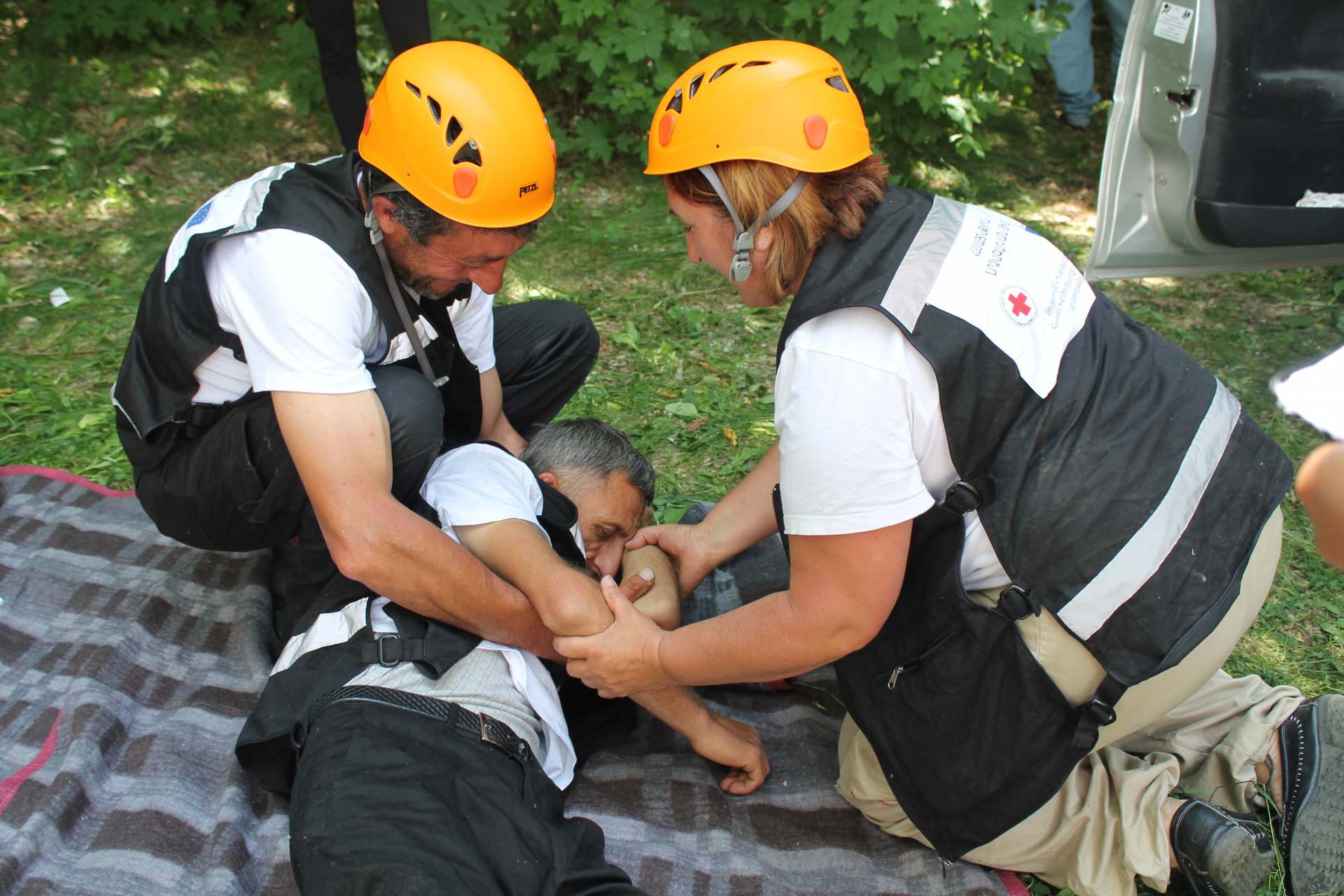
With the financial support of Austrian Red Cross and Austrian Development Agency, Armenian Red Cross Society implements “Building Safe and Resilient Communities” project in Yerevan, Vanadzor and Stepanavan cities, as well as in four rural communities of Lori region. The project launched on 1 December, 2012 and will continue till 1 December, 2015.
Main objective
To contribute towards reduced vulnerability to disasters of rural and urban population in Georgia, Armenia and Azerbaijan.
•Communities are better prepared - have adequate skills and coping mechanisms to mitigate the effects of disasters
•Targeted communities strengthened their local capacities and are able to initiate first response
Programme objective
Resilience of targeted vulnerable rural and urban communities to natural and manmade disasters is enhanced and sustainably strengthened.
•6 urban and rural communities in Lori region have identified risks and developed preparedness and mitigation plan of action.
•6 Volunteer Community Disaster Response Teams (VCDRT) established in targeted communities as a front line response capacity
•Number of pupils and households in target rural and urban communities in Lori region and in Yerevan enhanced their knowledge on disaster preparedness, as well as have developed Family Emergency Plans and conducted non-structural earthquake mitigation measures
•Coordination and collaboration on DRR/DM among key stakeholders in target region enhanced.
Expected results
1. Preparedness and response capacities of rural target communities enhanced
1.1. 4 target rural communities of Lori region have implemented Hazard Vulnerability and Capacity Assessment (HVCA) and developed specific report.
1.2. 4 target rural communities have developed their preparedness and mitigation plan of action and encouraged to implement the plan.
1.3. 4 Volunteer Community Disaster Response Teams (20 members each both women and men) are established in targeted communities, equipped with relevant equipment and linked to regional DM structure/mechanism.
1.4. Over 50% of adult population in targeted communities can correctly identify key personal actions to withstand local disasters.
1.5. At least 5 small scale mitigation projects are implemented in target communities.
2. Preparedness and response capacities of urban target communities enhanced
2.1. 2 urban communities in Lori region implemented VCA, developed preparedness and mitigation plan of action and implemented appropriate [practical action towards the plan.
2.2. About 48.000 people reached with awareness raising information on DRR, climate change adaptation and protection options through their children.
2.3. Over 16.000 pupils from targeted schools passed seminars on DP and were involved in competitions and simulations.
2.4. At least 50% of households reached with awareness raising have developed Family Emergency Plans, and at least 20% of households conducted non-structural earthquake mitigation measures at their homes, with the family's own resources.
2.5. 70% of the target schools have revised and updated their school evacuation plans in close coordination with stakeholders.
3. Coordination and cooperation on national level between national Red Cross Societies and external agencies, such as government departments, NGOs, relevant UN Agencies and platforms strengthened
3.1 The National DRR Platform used as a key tool for rising up local level problems and needs and for advocating towards national authorities.
3.2 Communication channels and coordination mechanisms are agreed among the key stakeholders in Action’s target region in Armenia.
3.3 Existing good practices on community DRR/DM methods, tools and strategies are shared by key stakeholders during workshops and meetings in at regional and national levels.
4. Operational knowledge and exchange of experience in CBDRR programming increased for all national societies and CBDRR is mainstreamed in RC/RC national strategies.
4.1 Regular exchange meetings and visits between the Red Cross / Crescent Movement Partners on programme progress, experience and good practices, non-structural mitigation and evacuation plans practicing.
4.2 Report on the lessons learned and good practices is prepared and disseminated to key local, regional, national and international stakeholders through the Red Cross/Crescent National Societies network, publications, websites, visits and global meetings.